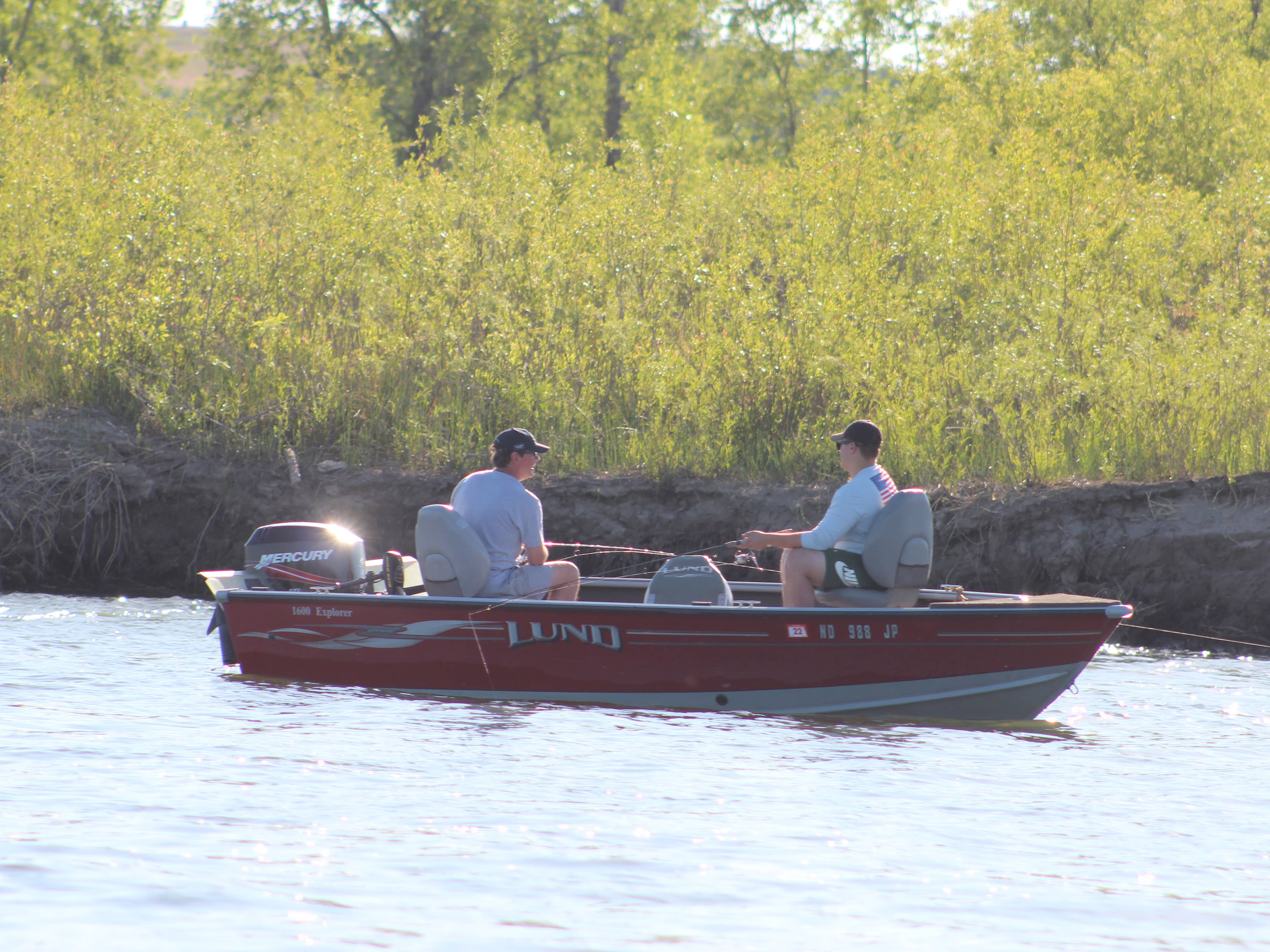
Fishing license sales increased by an average of 13 percent for North Dakota residents in the Apr. 1, 2020 – Mar. 31, 2021 timeframe. While the pandemic brought many outdoors, the expanded fishing opportunities had a lot to do with the increased participation as well. Simonson Photo.
By Nick Simonson
Hunting and fishing license sales by the North Dakota Game and Fish Department (NDG&F) increased by more than 10 percent across the board in the most recent licensing year of Apr. 1 2020 to Mar. 31 2021.
With the addition of approximately 5,000 firearms deer tags and about 800 spring turkey tags, total purchases were up by over 45,000 when compared to the same time frame a year ago, according to a recent report issued by the agency. While part of the increase was due to more people looking to get outdoors during a time of social distancing and physical separation, having an abundance of wild game, plentiful places to pursue birds and fish and increased access to those areas played a big role in catering to the uptick in those utilizing the outdoors, explains Randy Meissner, NDG&F Licensing Manager.
“There were so many people that were dealing with quarantines and having to work from home and I think it was probably understandable that most of North Dakota and other states as well were having a case of cabin fever,” Meissner relates of the pandemic’s influence on outdoor recreation last year, “it would stand to reason that [the pandemic] at least had a significant impact on some of the people just wanting to get outside, wanting to spend some time outdoors; and hunting and fishing in North Dakota was thankfully one of the choices they had available to them,” he concluded.
North Dakota’s licensing calendar mirrors that of its year-round fishing season, which was initiated in 1993, with new permits required every year on April 1. The timing of that calendar along with the onset of the pandemic and its related restrictions and social recommendations last spring happened in close conjunction, spurring the exodus into the outdoors and the purchase of licenses. As the pandemic wore on and worsened, it also brought more people across state lines into North Dakota for both waterfowl and upland hunting last fall, especially with the Canadian border closed to American hunters.
The documented data from the 2020-21 licensing year shows big increases in non-resident early Canada goose hunters (up 79.8 percent), 14-day statewide waterfowl permits (up 37.3 percent) and 14-day small game licenses (up 13.7 percent). While the border closure prevented out-of-state hunters from heading north last fall to catch the waterfowl migration into Canada for autumn hunts, it re-directed them to North Dakota. The state’s full wetlands and abundant access helped provide a high quality experience for those stuck below the forty-ninth parallel.
“The non-resident waterfowl traffic did increase last year, another reason for that would possibly also be the really good habitat that we did have available, there was some significant flooding in the eastern part of the state a couple of years ago,” Meissner relates, adding “it did set the stage for some really, really significant quality wetland habitat to be produced last year, so it could be a combination,” he adds.
In addition to non-resident hunters entering the state, a significant number of non-resident anglers came to ply the Peace Garden State’s waters as well. More non-residents were licensed, and for longer, than in the 2019-20 license year with increases in non-resident couple licenses (up 15 percent), non-resident 10-day licenses (up 7.9 percent) and non-resident year-long licenses (up 7 percent). Only three-day non-resident fishing licenses declined, and only slightly so (down 0.8 percent). Resident anglers also took to the water in droves, with increases across the board in all licensing categories.
Across the five types of resident licenses an average increase of 13.26 percent evidenced a return to the water for many inactive anglers and new ones as well. The biggest increases occurred in resident fishing licenses for senior citizens (up 22.8 percent) and standard resident fishing licenses (up 16.0 percent).
“We were still able to continue our normal year-to-year operations with stocking and egg harvesting and also meet all the requirements as far as distancing,” Meissner explains of the agency’s efforts to avoid disruption in the provision of good fishing opportunities which impacted many other jurisdictions last spring, adding, “over the last few years we have had some really good quality lakes and sustainable fisheries in much of the state, so there’s ample opportunity outside of Devils Lake and Sakakawea…there’s a lot of other area lakes where people can have some significant fishing opportunities.”
While Meissner predicts a smaller increase for the state’s license categories in the coming year, or perhaps a leveling off of the numbers seen over the last 12 months, the agency now turns to the task of retaining the thousands of hunters and anglers who joined or came back into the fold in 2020. With the recent hiring of an R3 Coordinator to help with the recruitment and reactivation of sportsmen and women, the third “R” in that equation – retention – moves to the forefront.
Meissner explains that the NDG&F is currently exploring digital connections with the hunting and fishing populace to remind them that the activities aren’t just for stressful times, and the agency is working with private companies to connect those using the resources with maps, digital technology and gear suggestions to keep them coming back and to help them find more success as they advance in their activities.
Sportsmen and women should expect more contact from the agency in the coming months, to learn more about what they want and when the various seasons and aspects of the outdoors open up to them again as things return to normal.
